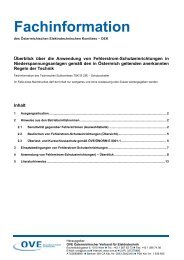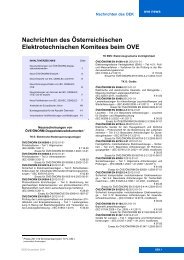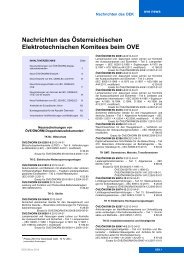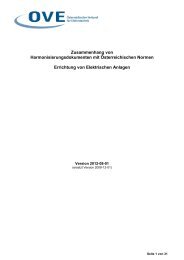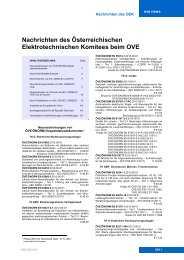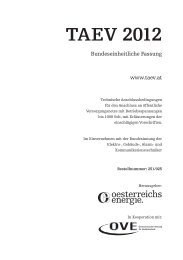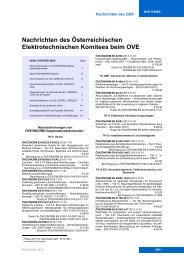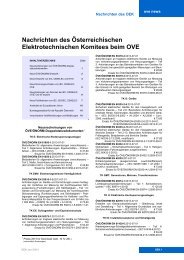Primer on Standards - OEK - OVE
Primer on Standards - OEK - OVE
Primer on Standards - OEK - OVE
- No tags were found...
You also want an ePaper? Increase the reach of your titles
YUMPU automatically turns print PDFs into web optimized ePapers that Google loves.
Taking advantage of the recent c<strong>on</strong>versi<strong>on</strong> of 12 European currencies into theeuro, we can graphically use its introducti<strong>on</strong> as a way to illustrate the fact thatmore than 300 milli<strong>on</strong> Europeans have had to change their m<strong>on</strong>etary standards.All Germans knew, and still know what exactly they could purchase with 10, 50,or 100 DM. The same goes for the French, the Dutch, etc. Inversely, Italians,Spaniards or any<strong>on</strong>e else knew exactly, and certainly still know how much adinner in a restaurant or a specific car should cost in Lira or Pesetas. And this isnot to menti<strong>on</strong> salaries! The arrival of the euro has disrupted all these c<strong>on</strong>ceptsand we are all currently trying to create new <strong>on</strong>es.For our specific purposes however, Part 3 of the CEN/CENELEC Internal Regulati<strong>on</strong>sdefines a Standard as a Document, established by c<strong>on</strong>sensus and approved by arecognized body that provides, for comm<strong>on</strong> and repeated use, rules, guidelines orcharacteristics for activities or their results, aimed at the achievement of theoptimum degree of order in a given c<strong>on</strong>text. <strong>Standards</strong> should be based <strong>on</strong> c<strong>on</strong>solidatedresults of science, technology and experience, and aimed at the promoti<strong>on</strong>of optimum community benefits.<strong>Standards</strong> in everyday lifeThis definiti<strong>on</strong> given above may be rather technical and c<strong>on</strong>fusing. To put it inother words, we will use two very simple examples that explain the c<strong>on</strong>cept ofstandard in everyday life: A credit card and a sheet of paper.We certainly agree with the fact that any given bank can issue its credit cardfollowing its very own specificati<strong>on</strong>s. A bank could issue a credit card that isround, thinner and with two additi<strong>on</strong>al chips. But would c<strong>on</strong>sumers, the veryclients of this bank, like to exchange their old-fashi<strong>on</strong>ed, rusty credit cards forthese new, trendy <strong>on</strong>es? Probably not… unless a real compatibility with the“standard card” is guaranteed. This is because behind the old credit cards thereare a lot more facts than just the card itself, and c<strong>on</strong>sumers count <strong>on</strong> everythingthat goes with it (worldwide acceptance that means mobility and independence,m<strong>on</strong>ey machines adapted <strong>on</strong>ly for “standard” cards, even wallets are made tooin this pattern). This “standard size” has g<strong>on</strong>e even further and now is widelyaccepted and recognized as a reference size for other documents like visitingcards. Thus, it is easy to understand that if a new trendy card is not compatiblewith the worldwide standard card, its success would automatically be very limited,or rather, it would be a complete failure.This example describes quite well the more unknown and difficult world ofelectrotechnical standards. Standardizing these products, processes and servicesis a quite time-c<strong>on</strong>suming task that can nevertheless offer great benefits toUncovering the mysteries of standardizati<strong>on</strong> in Europe 15




